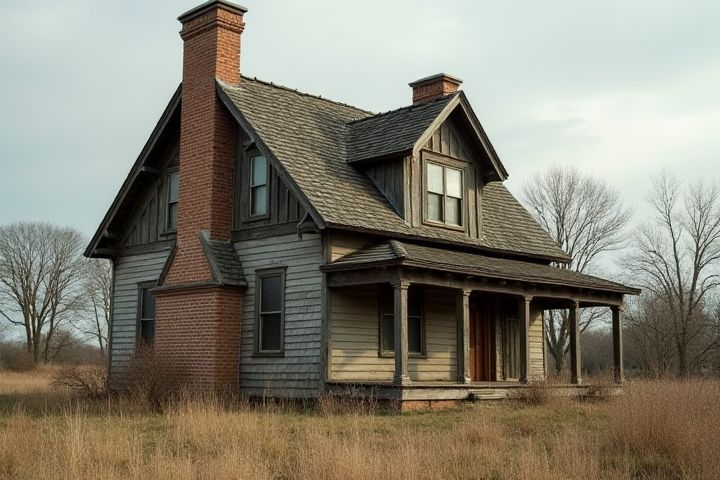
The first known house is believed to have been constructed around 10,000 BCE during the Neolithic period. Archaeological evidence points to structures made from mud bricks and stone in various ancient settlements, such as Catalhoyuk in modern-day Turkey. These early homes featured distinct rooms for living, cooking, and sleeping, reflecting a shift from nomadic lifestyles to more permanent, community-centered living. Over time, architectural styles evolved, influenced by regional materials and climatic conditions, leading to diverse housing designs in different cultures. Understanding the origins of housing can help you appreciate the development of human society and architecture throughout history.
When Was The First House Built
Stone huts (Africa)
The earliest stone huts in Africa date back to around 10,000 BCE, during the Mesolithic period. These structures were primarily constructed by ancient hunter-gatherer communities who utilized locally available stones for durability and insulation. Archaeological evidence suggests that these huts served not only as living spaces but also as communal gathering spots, reflecting early social organization. In places like the southern regions of Africa, you can find remnants of these stone dwellings that illustrate the ingenuity and adaptability of early human societies.
Göbekli Tepe (Turkey)
Gobekli Tepe, located in southeastern Turkey, features some of the oldest monumental architecture, dating back to approximately 9600 BCE. This archaeological site is notable for its large stone structures, believed to serve religious or communal purposes, showcasing a shift from nomadic lifestyles to settled communities. Excavations have revealed that the construction of such monumental sites came long before the advent of agriculture, marking a significant development in human civilization. As one of the earliest known examples of large-scale construction, Gobekli Tepe provides valuable insights into the social dynamics of prehistoric hunter-gatherer societies.
Skara Brae (Orkney, Scotland)
The first house in Skara Brae, an extraordinary Neolithic village on Orkney, Scotland, dates back to around 3180 BCE. This remarkable archaeological site features well-preserved stone structures that showcase the advanced architectural skills of its early inhabitants. Each house, complete with stone furniture such as dressers and beds, was part of a sophisticated settlement that thrived over 5,000 years ago. Visiting Skara Brae allows you to explore insights into prehistoric life, highlighting its significance in understanding human development in this region.
Çatalhöyük (Anatolia, Turkey)
Catalhoyuk, located in Anatolia, Turkey, is one of the world's oldest known urban settlements, dating back to approximately 7500 BCE. The first houses in Catalhoyuk were constructed using mudbrick and are notable for their lack of streets, as inhabitants accessed rooftops to enter their homes. Archaeological excavations reveal a complex society with distinct communal spaces, religious shrines, and vibrant artworks, indicating a rich cultural life. Your understanding of early human habitation is enriched by the insights from Catalhoyuk, highlighting the transition from nomadic lifestyles to established communities.
Knap of Howar (Scotland)
Knap of Howar, located on the Orkney Islands in Scotland, is considered one of the oldest known stone houses in northern Europe, dating back to around 3,600 BCE. This Neolithic site features two well-preserved stone structures that showcase the architectural skills of prehistoric inhabitants. The houses are characterized by their thick stone walls, roofs made from timber and thatch, and a unique layout that emphasizes communal living. Your visit to Knap of Howar offers a fascinating glimpse into the daily life and housing practices of ancient Scottish communities.
Jericho (West Bank)
The first known house in Jericho, located in the West Bank, dates back to around 9,000 BCE, making it one of the oldest continuously inhabited cities in the world. Archaeological excavations have revealed that these early structures were simple mud-brick dwellings, designed to provide shelter and protection for their inhabitants. The site of Jericho possesses significant historical importance, showcasing the development of agriculture and settlement patterns during the Neolithic period. You can explore how these early houses reflect the transition from nomadic lifestyles to more permanent communities in human history.
Banpo Village (China)
The first houses in Banpo Village, located near Xi'an, China, were constructed around 5,000 to 6,000 years ago, during the Neolithic period. These dwellings were primarily made of mud and wood, reflecting the architectural practices of early farming communities. Archaeological findings indicate that the village featured circular and rectangular homes, indicative of a structured community layout. Banpo Village also provides valuable insights into the agricultural and social practices of early Chinese civilization, showcasing early pottery and tools used for daily life.
Monte Verde (Chile)
The first structure resembling a house in Monte Verde, Chile, dates back approximately 14,800 years, positioning it as one of the earliest known human settlements in the Americas. This archaeological site showcases a well-preserved dwelling, made of wood and containing artifacts suggesting a complex social organization. Researchers have discovered stone tools, evidence of fire, and remnants of food that indicate a varied diet of plants and animals. Monte Verde stands as a critical reference point for understanding prehistoric life, migration patterns, and the adaptation of early humans to their environment.
Mohenjo-daro (Pakistan)
The first houses in Mohenjo-daro, one of the key urban centers of the Indus Valley Civilization, were constructed around 2500 BCE. This ancient city is notable for its advanced urban planning, including a well-organized layout featuring brick houses, drainage systems, and public baths. The architecture typically comprised multi-story homes made of fired and sun-baked bricks, highlighting the ingenuity of early urban dwellers. Excavations have revealed that the residential structures often included spacious rooms, illustrating the sophisticated lifestyle of their inhabitants.
Ain Ghazal (Jordan)
The first permanent houses in Ain Ghazal, Jordan, were built around 7200 BCE, marking a significant development in human settlement. Archaeological excavations have revealed that these early structures were constructed using mud bricks and featured multiple rooms. Ain Ghazal is significant as one of the oldest known Neolithic sites, providing insight into the transition from nomadic lifestyles to settled agricultural communities. The site is also renowned for its impressive human figurines, dating back to this early period, reflecting the cultural practices of the inhabitants.
